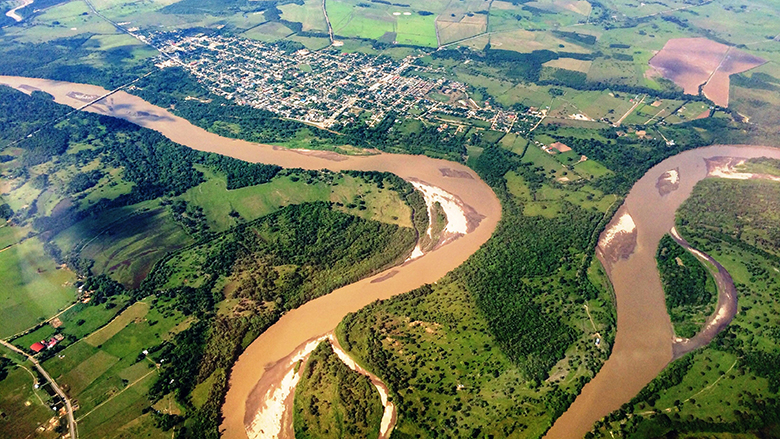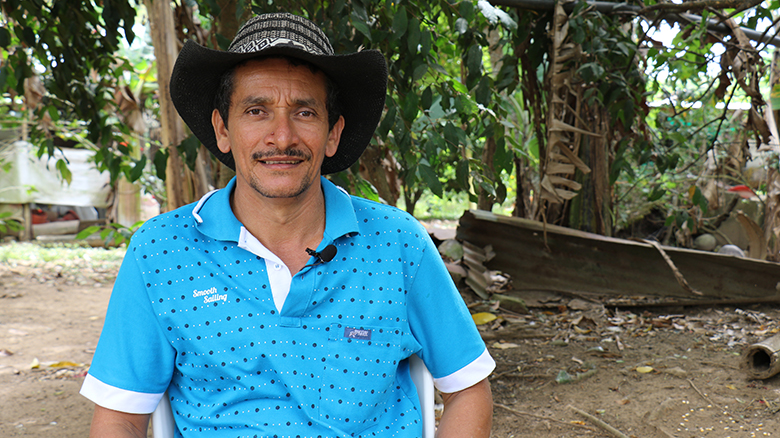When cattle rancher Jorge Rodriguez established his farm years ago in the Meta Department of Colombia’s Orinoquía region, he decided to call it La Esperanza, meaning hope.
Rodriguez was not alone. Between 1990 and 2015, more than 1 million hectares of Orinoquía’s forests, mostly in the Meta Department, were cleared to create pasture land. Colombia’s Orinoquía region is a massive, 25-million-hectare savanna and wetland area in the east of the country, bordering Venezuela. It is home to almost 1.5 million people. In recent years, large-scale land conversion has happened throughout the region to increase the production of livestock, palm oil, cacao, rubber, and rice.
Many rural and indigenous farmers in Orinoquía are dependent on agriculture and natural ecosystems for their livelihoods. Noticing declining productivity and environmental impacts, some of them, like Rodriguez have made important changes to the way they manage their farm land. He says, “Forests are the lungs of the earth. By planting trees and closing off some areas for natural regeneration while rotating my livestock, I have learned to increase the productivity of my farmland. Before, I had one animal per hectare and now, thanks to better forage and shade structures, I can have three animals per hectare. In addition, they are better fed and healthier.”
The Orinoquía is considered Colombia’s last agricultural frontier, with the potential to serve as a food source for Colombia, and the world. While exploiting this potential is vital for the livelihood of farmers, it is also a crucial part of Colombia’s development agenda. But agricultural expansion comes at a cost.
Clearing forests to create pasture land is a leading driver of deforestation in Orinoquía. Not only are these forests vital to mitigate climate change, they are home to hundreds of species of mammals and birds. Other threats include the draining and conversion of millions of hectares of highly biodiverse native savannas, including flooded savannas, which are associated with high levels of methane emissions. The region belongs to the Orinoco river watershed that encompasses the region’s vast grasslands and rainforests, and is the source for about a quarter of all running water in Colombia.
To ensure agricultural expansion is done sustainably in Orinoquía, Colombia has partnered with the World Bank’s BioCarbon Fund Initiative for Sustainable Forest Landscapes (ISFL) to launch a Sustainable Integrated Landscape Program in the region. Led by Colombia’s Ministry of Agriculture and Rural Development, in close coordination with the Ministry of Environment and Sustainable Development and the National Planning Department, the program has the highest-level of support from country’s President Juan Manuel Santos, who signed the grant agreement with the World Bank last week.
The $20-million grant from the BioCarbon Fund ISFL will be used to improve land-use planning, protect landscapes including forests, and provide technical assistance so that cattle, oil palm and commercial forestry businesses transition to sustainable and competitive production models. Engaging the private sector is at the core of the program, including promoting public-private partnerships that support low-carbon practices, supporting environmental zoning that preserves natural habitats and working with the private sector on areas where it can make investments in sustainable production. Once these activities produce verified carbon emission reductions, the BioCarbon Fund ISFL will reward these efforts by purchasing up to 10 million tons of carbon dioxide equivalent (CO2e).
“Given the level of economic growth in the Orinoquía region over the past 15 years, there is a unique opportunity right now to influence the development trajectory of the region and ensure that future land use avoids deforestation and other significant negative environmental impacts,” says Issam Abousleiman, World Bank Country Manager for Colombia.
The bigger picture
The recently-brokered peace agreement between the government and the Revolutionary Armed Forces of Colombia (FARC-EP) provides a unique opportunity for the BioCarbon Fund ISFL and Colombia to work together to advance sustainable and low-carbon natural resources management and enforcement. The BioCarbon Fund ISFL program in the Orinoquía supports strategies for addressing the structural causes of conflict that also create enabling conditions for the adoption of sustainable and low-carbon natural resources management. This will support sustainable development in the Orinoquía and contribute to the ongoing peace process in the country.
“The Sustainable Integrated Landscape program for the Orinoquía is very important for a country like Colombia,” says the Minister of Agriculture, Juan Guillermo Zuluaga. We have the opportunity to transform the Orinoquía into a food basket for the country and the world in a sustainable way. This program will help us to promote sustainable forestry and climate smart agriculture while reducing emissions and preserving the region’s ecosystem functions.”
Related
ISFL Orinoquia Sustainable Integrated Landscape Program Video (English) (Español)
BioCarbon Fund Initiative for Sustainable Forest Landscapes (ISFL)


